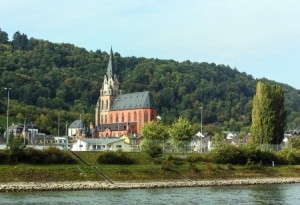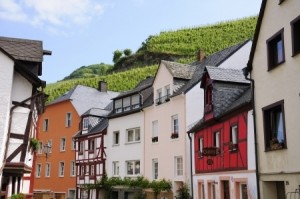 Here’s some good news: as of September 1, 2013, the wine classification system in Germany just got a little bit easier.
Here’s some good news: as of September 1, 2013, the wine classification system in Germany just got a little bit easier.
With the release of the 2012 vintage, the Rheingau is now using the term “Grosses Gewächs” to indicate dry wines produced in their top-tier (Grosse Lage) vineyard sites. Until recently, the Rheingau was the only region in the country to use the term “Erstes Gewächs” to represent their top-tier dry wines, but as of now, the Rheingau will use the same term as the rest of Germany.
Now, there is still quite a bit of complication to be sure, with the country’s gU’s, QbA’s and Prädikats, but at least for now there is one less piece of the VDP puzzle to figure out.
To explain the VDP – Verband Deutscher Prädikatsweinguter – classifications quite simply, they are the Association of German Prädikat Wine Estates – and their goal is to create a terroir-based classification of German vineyard sites, based on the system of vineyard classification used in Burgundy as their model. The idea is to use the quality of the vineyard site in addition to the ripeness of the grape (Prädikat) to define a top-tier German wine.
The levels of quality that an estate can apply for are as follows. (Note: the method of comparing the VDP classificaton to the vineyard hierarchy of Burgundy is used on the VDP website and can be accessed here):
- Grosse Lage, or “Great Site” – The highest classification, equal to a “Grand Cru” in Burgundy. A dry wine from a Grosse Lage is termed a “Grosses Gewächs.” (As noted above, until September 1, 2013, there was an exception for the top-tier dry wines of the Rheingau, which used the term Ertes Gewächs. However, the Rheingau estates are now using the term “Grosses Gewächs” along with the rest of Germany – hooray!)
 Erste Lage, “First Site” or “Very Good Site” – Comparable to a “Premier Cru” in Burgundy.
Erste Lage, “First Site” or “Very Good Site” – Comparable to a “Premier Cru” in Burgundy.- Ortswein, or “Classified Site Wine” – Comparable to a “Village” level wine in Burgundy.
- Gutswein, or “Estate Wine” – “Comparable to a “Regional” wine in Burgundy.
The 2012 vintage in the Rheingau was notortiously botrytis-free, showcasing grapes that have exceptional ripeness and excellent acidity – a perfect year to highlight the increasingly popular dry style. We can’t wait to give them a try!
For more information, see the website of the VDP.
Please note: SWE is trying to keep up with the ever-changing wine and spirits industry, whether it be changes in EU regulations, new AVAs, or newly approved wine regions in the southern hemisphere. To access the “quck version” of these updates, see our “Study Guide Updates” pages. We suggest checking back regularly!
Click here to return to the SWE Website.
Post authored by Jane A. Nickles. CWE – jnickles@societyofwineeducators.org